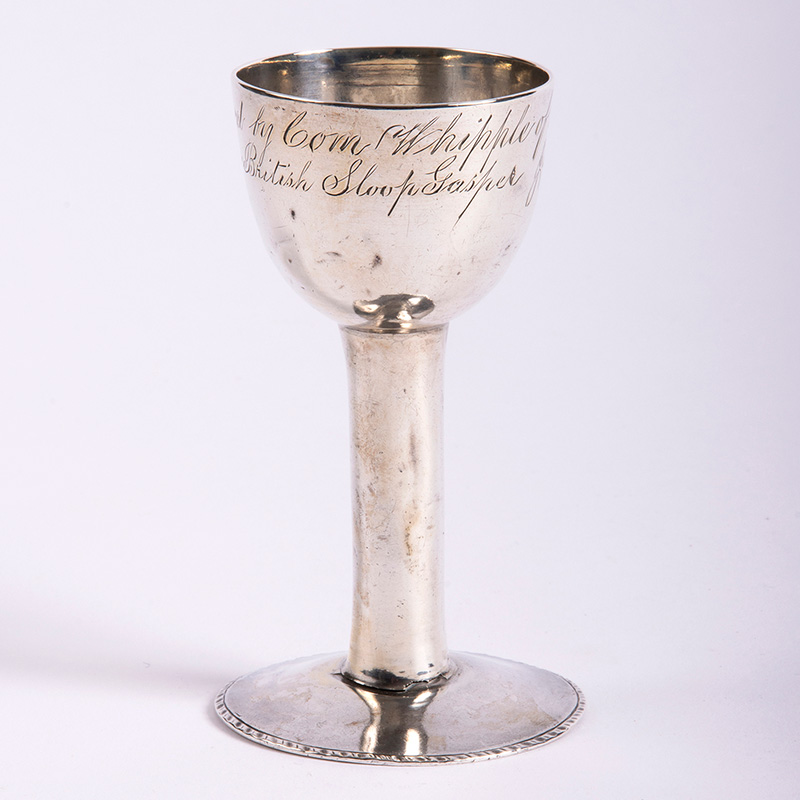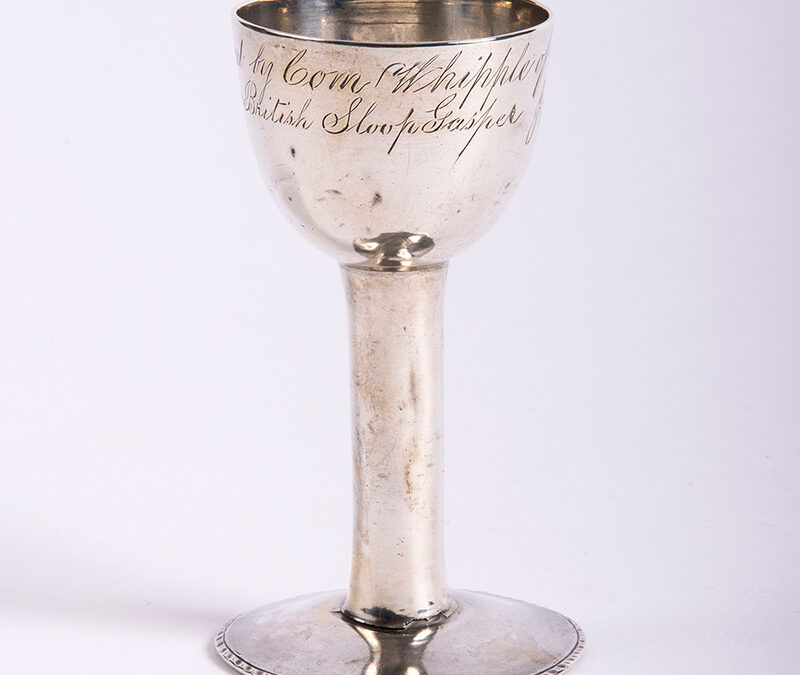
| Maker | Unknown |
| Date of Creation | 1760–72 |
| Location | Made in England; Recovered in Rhode Island |
| Materials | Metal, silver |
| Institution | Rhode Island Historical Society |
| Credit Line | Gift of David Fisher |
| Accession Number | 1921.1.36 |
| Photo Credit | Rhode Island Historical Society |
This stemmed liquor goblet with round gadrooned base and plain bowl is inscribed “Captured by Comm. Whipple of R.I. From the British Sloop Gaspee Jun 17, 1772” around the outside lip of the bowl. The H.M.S. Gaspee was actually burned by Rhode Island patriots on the night of June 9, 1772, off of Namquid Point, now called Gaspee point. The Gaspee affair was a significant event leading up to the American Revolution. The Gaspee was a Royal Navy revenue schooner that enforced the Navigation Acts around Newport, RI. It ran aground in shallow water while chasing the packet boat Hannah on June 9 off Warwick, RI. A group of men led by Abraham Whipple and John Brown I attacked, boarded, and burned the Gaspee to the waterline. The event sharply increased tensions between American colonists and Crown officials, particularly given that it had followed the Boston Massacre in 1770. The Rhode Island Historical Society also holds the only known original imprint of a broadside offering a reward of one hundred pounds sterling for the apprehension of the attackers of the Gaspee. Whipple took the goblet as a piece of plunder from the Gaspee, and the object descended in his family as a relic of partiotic fervor.

